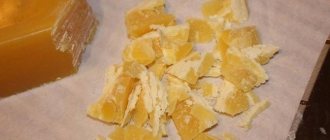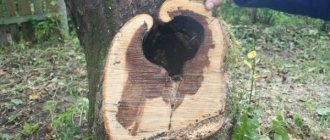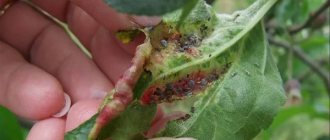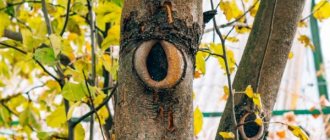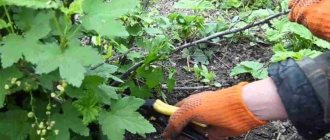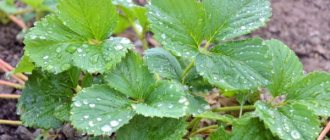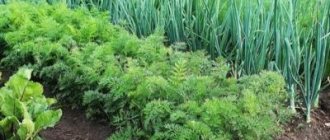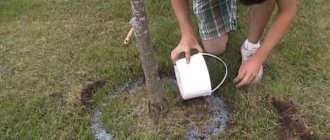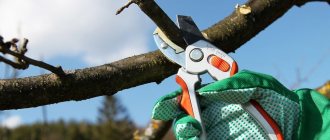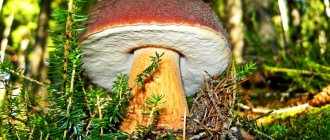A novice gardener should know when to prune trees and be able to cut branches correctly. Pruning helps the crown formation process, thereby eliminating unnecessary growth of branches in width and length. Also, cutting down is an effective way to make the harvest in the garden richer, protect against pests and significantly extend the life of the plant.
When can you prune fruit trees and why should you do it? These are popular questions among gardeners. Everyone wants to have a good harvest and healthy trees.
Pruning an apple tree in autumn
The following types of pruning are popular:
- Immediately after planting for faster root establishment in the planted soil.
- Shortening. It must be used for uncontrolled growth of branches in different directions and for crown formation.
- Health-improving. Dried, diseased or deformed branches are removed.
- Supportive. Excessively large branches are shortened, which gives the tree additional air flow.
Cut processing is a must
Pruning a tree involves removing unnecessary branches from it, for example, dead, diseased, interfering with the growth of young branches, or worsening the appearance of green space and spoiling the impression of landscape design. The place of the cut, by analogy with any other living creature, is called a wound, and in fact it is one. Just as harmful bacteria can enter the body through a cut in our skin, pathogenic fungi are introduced into the wood at the site where the branch was cut, which can quickly destroy the tree or significantly weaken it. Another danger is the active evaporation of moisture from the wound, which weakens the plant.
In connection with the above, cutting processing is not a whim, but a strict necessity. Some gardeners ignore doing this work, hoping that the wound will heal on its own over time. For the sake of fairness, it should be said that the place from which the branch was removed actually becomes overgrown - first a roll of bark is formed, located around the circumference of the wound. Gradually it converges to the center and closes the cut. It just happens extremely slowly. Therefore, the area where the cut branch grew must be treated. And there is only one way to do this - putty with special mixtures.
Caulking compounds
According to gardening practitioners, any substance with sealing properties is suitable for sealing saw cuts. There is no scientific data on which means perform protective functions better or worse, since such studies have not been conducted, and probably never will be conducted. The recommendations are based only on the personal experience of people who have been gardening for a long period of time. Today, the following solutions are used for putty in orchards:
- garden var
- rosin
- Oil paint
- acrylic paint.
And, of course, the gardener has a wide selection of specialized pastes at his disposal, the assortment of which in specialized stores makes one’s eyes wide open. We won’t name brands, but there are more than a dozen of them on the market. It is best to ask the seller about which mixture is optimal in your case.
The choice depends on the type of green space, its age, growing conditions and some other factors. The only thing that can be indicated as a general recommendation is the composition’s resistance to moisture. Poor-quality garden pastes have the “sin” of falling off after the first rain. When purchasing coating, pay attention to this point.
The main requirement that must be observed is that the substances included in their sealants should not be harmful to the plant. Because of this, nitro paints cannot be used to process the cut, which are very convenient from a practical point of view, as they dry quickly. Nitrogen compounds are poison for stem cells and foliage. Nitrogenous components are liked only by roots, and even then not by everyone. It is also not recommended to use substances based on petroleum products for coating.
Timing of pruning
What kind of trees are there in the middle zone - deciduous and coniferous trees
The timing of pruning is best coordinated with the lunar calendar and sidereal cycles. So, on a waning moon, sap flow increases, then when the Earth passes the zodiac signs of Pisces, Aquarius and Cancer, it drops significantly.
Additional Information. The pruning season always depends on the type, age of the fruit tree, where the garden is located, and in what climatic conditions the plants are located.
In the Moscow region, the timing varies: here you can use not only spring pruning, but also do it in summer (May, June) and winter (February). In Siberia, trees are pruned only in early spring, in March, then the fruits will be very large and juicy.
Important! In no case should pruning be done with a rusty tool, or branches should be torn off by hand - the plant will get sick and die. It is also necessary to process large sections and cover them with oil paint or varnish. Apricots or peaches even have small sections. In this case, the wound healing rate will increase to 3 cm per year (without treatment - 1 cm per year).
Favorable days in 2021 for pruning in the fall:
- September: 1, 16, 26, 28.
- October: 5, 8, 13, 29.
- November: 4, 9, 25, 28.
December is considered a month of rest for gardeners.
How to properly cover the cutting area?
After we have told you WHAT you need to cover up the cuts of old branches, we will briefly explain HOW you need to do this. Carrying out this procedure correctly will allow you to avoid mistakes and ensure effective protection of the plant - the way it really should be.
The quality of processing of sections very much depends on how well you prepare the wound for the putty. If you miss this moment, then all the work will go down the drain. The caulking compound does not stabilize on the wood and will most likely peel off in the very near future. As part of your preparation, you need to do the following:
First of all, use a sharp knife to cut off all the burrs remaining after sawing off the branch. Do not try to tear them off with your hands. This can lead to scuffing of the bark. At the end of mechanical processing, it is recommended to treat the cut with copper sulfate. After this, let the wood dry for 1-2 hours. If you place putty on wet wood, it will not stick to it.
To apply the composition directly, use a spatula or wooden spatula. The product should be applied evenly. Try not to leave untreated areas. Coat the entire area right around the circumference. This will ensure the strength of the protection. Do not try to apply the composition in a layer that is too thick. It is not the thickness that is important, but the uniformity of the layer.
Best time to prune
When is the best time to prune trees, fall or spring, depends on many factors. It is preferable to do this in the spring, since during these months the tree is just waking up, and the wounds will heal faster.
Important! Pear, cherry, and plum trees may become diseased after pruning in the fall. Also, you should not prune young seedlings at this time.
If broken branches suddenly appear after bad weather, they should be removed immediately, regardless of the time of year. One contraindication for this may be an air temperature of -5 degrees or lower.
What and how to cover the cuts on apple trees?
If any damage appears on the apple tree (teared bark, broken branch, etc.), this poses a threat to the plant: pests, microorganisms, and infections can penetrate through the wounds. In addition, untreated injuries take a long time to heal, which affects the yield and the process of formation of new shoots. For these reasons, even the smallest cracks should not be ignored - action should be taken immediately. What and how to treat the apple tree, as well as what to do if the cut begins to rot, will be discussed further.
Sap flows from the tree
This situation is especially dangerous for plants, as they can be seriously damaged. Experts say that if juice flows from small sections that were not covered, then the pruning was carried out very late. The wounds simply did not have time to heal before active sap flow began. Of course, this will not harm the tree itself, but some branches and fruit buds may dry out. If a gardener promptly notices the release of sap from a tree wound, he can make a special clay mash that can be used to cover even the smallest cuts.
The main reasons for the formation of slices
Any traumatic procedures cause cuts. The root causes of damage can be very different:
- Incorrect pruning . Forming the crown, removing old, diseased branches, rejuvenation are procedures that almost always leave damage on the trunk that requires treatment.
- Accidental mechanical damage . If the cracks have not been treated, cuts will form on them.
- Frostbreakers . In cold weather, foliage does not protect the bark, and it cracks.
- Bark scuffing . Occurs when cutting shoots improperly, if the base from below is not cut down before the procedure.
- Temperature fluctuations . Cracks can also occur as a result of sunburn.
- Windfalls and other weather troubles . In summer, branches may break under the weight of the harvest.
- Rodents . They don’t mind eating bark during the cold season and damage it.
Rules for forming and trimming the crown
How to deal with aphids on fruit trees
When pruning and shaping the crown of trees, it is necessary to take into account that fruit crops have five stages of life:
- Growth of vegetative parts,
- Active growth and fruiting,
- Balanced growth with fruiting,
- Reduced growth and yield,
- Aging.
Note! When pruning the branches of a fruit tree, you should definitely take into account its age, stage of life and choose the appropriate pruning method.
Types of crowns that are obtained after pruning:
- Sparsely tiered. Suitable for most fruit trees.
- Whorled-tiered. Makes the tree too tall, making it difficult to harvest by hand.
- Tierless. Suitable for highly branched plants.
- Combined. Popular among cherries, pears and apple trees.
- Spindlebush (spindle-shaped). Suitable for low-growing trees.
- Bush-like. For vigorous species.
- Semi-flat: for plums, cherry plums, apricots.
- Palmettes, cordons (flat). Suitable if you want to increase productivity.
Safety precautions
Safety precautions concern pruning processes and garden equipment issues:
- Sharp, heavy objects should not be thrown, only passed from hand to hand. Each of them must have its own case during transportation.
- When carrying out the procedure, use gloves to prevent damage and splinters.
- Keep children away from tools that are dangerous for them.
- Sharpen secateurs and knives in a timely manner. Hooks on which you can hang items are suitable for storage.
- When pruning, use a stepladder or ladder with wide steps. Do not prune in the rain or on wet stairs.
- Wear comfortable shoes to avoid slipping.
Tree pruning and crowning
Pruning large branches on old trees
The wood of older trees is usually very dense, so improper pruning can damage the bark.
The cut should be made on the underside, one-third deep. About 3 cm is retreated from the lower cut, then the branch from above is cut down. In this case, the bark will definitely remain intact and unharmed and will not be able to come off.
Trimming and cutting technology
The branches are shortened by removing this part from the total length:
- One third of the pruning is a slight shortening,
- Half is average
- More than half are strong.
Rejuvenating fruit tree pruning
Technologies:
- “Under the ring” - the cut is made on the top of the bead on the wood.
- Pruning entire branches - to get rid of excess branching, in order to penetrate the sunny color to the inside of the crown.
- Kerbovka. A rare event that is carried out to slow down growth processes.
Note! Some time before the end of the growing season, the growth buds are pinched, after which the formation of ringlets and strong lateral branches begins.
Crown formation scheme
There are quite a lot of schemes for the formation of tree crowns. The most popular are:
- Tiered-pruned. Creates a strong plant skeleton.
- Cupped. Perfectly suits apple trees, creating a solid foundation.
- Fusiform. Requires annual manual labor.
In annual apple trees, crown formation occurs after planting. The seedlings do not have strong branches, so during the first pruning it is important to achieve a good result so that the active growth of new shoots begins.
Is there a need to cut and process the apple tree?
In order for fruit trees to produce a harvest every year, they need to form a branched part, removing excess branches, redirecting new shoots, removing dry and diseased parts. But at the same time, damage remains on the trunk that should be treated.
This procedure is necessary to seal the wound and is an obstacle to the penetration of infections and bacteria. The fact is that negative processes begin to occur in an unprotected area.
First of all, an untreated cut causes the branch to dry out. This happens because the movement of organic substances is disrupted and nutrients do not reach the part of the shoot that is located above the cut, and moisture evaporates through the recess itself
In addition, cracking may begin in an unprotected area. Moreover, the cracks can be quite deep. Sometimes hollows may appear in the area where the saw cut has damaged the wood.
It is timely and competent processing that is the main prevention of the formation of depressions, rotting of wood and damage to it by fungal diseases.
When to treat saw cuts and damaged apple tree bark
The saw cut is processed in dry, cloudless weather. When to carry out activities depends on precipitation and time of year. In rainy autumn, the cuttings do not dry well, and you have to wait 7–10 days. In spring, in clear weather, the wound can dry out in 2-3 days.
In cold weather, in winter, injuries on the tree do not heal at all. Through them, low temperatures damage healthy shoots, so formation is not carried out in winter.
If the cut is small, 2–2.5 cm in diameter, it does not need to be covered, just disinfected. Such damage heals quickly and does not pose any particular threat.
If the cut is 3 or more centimeters in diameter, then perform the following procedure:
- After trimming, the damage is cleaned of burrs and roughness. The work is done with a sharpened garden knife.
- Lubricate the saw cut with a disinfecting solution (lime, Bordeaux mixture, copper or iron sulfate, manganese solution, etc.). It will not allow pathogenic microorganisms to enter the wound.
- Leave the tree for 5–10 days. The treated area must dry.
- Cover the cut area with a special product. In this case, the area along the edges of the cut is not touched.
If hares or mice have damaged the bark over the winter, it has cracked due to temperature fluctuations or suffered from sunburn, treat it in the spring, when the threat of frost has disappeared. Injured segments are cleaned to a healthy area and treated in the same way as after trimming the crown.
Experienced gardeners believe that the optimal period for treating saw cuts and damage to the bark is a dry and not cold autumn. At this moment, all metabolic processes in the apple tree slow down.
What kind of paint to cover the cuts on trees!
A wound on an apple tree, be it an even cut, a ragged damage from a broken branch or stripped bark, is an “open door” for fungi, bacteria and pests.
Untreated damage takes a very long time to heal, which affects the fruiting of the apple tree and the formation of new shoots. No damage to the apple tree bark or its wood should be left unattended.
When to treat cuts and damage to apple tree bark?
In order for apple trees to bear fruit every year, the crown is formed annually, removing unnecessary shoots, redirecting young branches, cutting down dry and diseased ones. But when pruning, wounds remain on the trunks, which should be disinfected and treated with a protective agent.
Wound treatment in warm sunny weather.
When to cover up cuts on apple trees depends on the time of year and the weather:
- In autumn, during the rains, the cuts take a long time to dry out. Sometimes you have to wait 7 - 10 days for the wound to stop getting wet and to be treated;
- In spring, in warm sunny weather, the sawn cut can dry out in two days.
When pruning in summer, only young, non-lignified shoots are removed. A cut of small diameter quickly heals on its own and does not need special treatment.
In winter, at sub-zero temperatures, the wounds on the apple tree do not heal; through them, frost damages healthy branches, so trees are not pruned in winter.
Sections up to 2 - 2.5 cm in diameter are disinfected, but not covered with anything. They close quickly on their own; such a cut poses no danger to the apple tree.
With cuts larger than 3 cm, work is carried out according to the plan:
- Immediately after pruning, clean the wound from burrs and roughness with a sharp garden knife;
- Use a brush to coat the saw cut with a disinfectant solution, which will protect against pathogens from penetrating the wound;
- Leave for several days until dry;
- Cover the damaged wood with a special product, without touching the bark of the apple tree along the edges of the cut.
If in winter the bark of an apple tree is damaged by rodents, cracked due to temperature changes, or gets sunburned, treatment is carried out in the spring, when the temperature stops dropping below zero.
Damaged areas are cleaned down to healthy wood and treated in the same way as after seasonal pruning of trees.
Watch the video on how to cover up wounds on a fruit tree:
How to treat a cut apple tree? Disinfection methods
Damage to an apple tree of any size must be treated with a disinfectant so that pathogens do not enter the wound.
So, what to cover a pruned apple tree with? Potassium permanganate and preparations containing copper or iron sulfate are suitable for these purposes. All solutions are prepared immediately before processing apple trees:
- 50 grams of copper sulfate are diluted in 1 liter of very warm water;
- Several grains of potassium permanganate are diluted in warm water. The color should be bright pink;
- 30 grams of iron sulfate are diluted in 1 liter of water;
- Prepare a 3% Bordeaux mixture. To do this, 30 grams of copper sulfate are dissolved in 0.5 liters of warm water. Separately, dilute 30 grams of lime in 0.5 liters of water. The vitriol solution is slowly poured into the milk of lime in a very thin stream, stirring constantly. The finished Bordeaux mixture has a beautiful blue color.
To apply the solution, use any brush. The weather at the time of processing should be dry and windless. Be sure to use rubber gloves.
To disinfect damaged wood, you can use balms with fungicides, which are sold in gardening stores.
What and how to properly coat cuts
After the cleaned and disinfected cut has dried, you can begin to apply putty.
What kind of paint can be used to cover the cut?
To protect the bark, you can use oil paint based on drying oil (ochre, etc.). Other types of paints (white paint, alkyd enamels, nitro enamels, etc.) are not suitable - they cause damage to the apple tree: they can burn the wood and destroy living tree cells.
Due to the fact that all paints are washed off by precipitation, they will have to be renewed periodically
What to do if the cut begins to rot?
If a wound on the wood begins to rot, this may indicate that the apple tree is infected with a tinder fungus. The spores of this parasite are carried by the wind, and an unprotected area is an ideal place for them to attach.
The damaged shoot is completely cut off and the area is inspected. If the area is healthy, then the parasite has not yet penetrated. The diseased part is burned, disinfected and the cut area is treated with garden varnish.
If darkened wood is found in the cut area, it means that the fungus has begun its activity and after a certain time the apple tree will disappear. The tree is cut down at the root and burned - a diseased plant can infect the entire garden.
As you can see, you should not ignore saw cuts and other damage to the wood - measures must be taken immediately. The main thing is to approach the problem competently, using the right material and tools, and then the apple tree will definitely delight you with a generous harvest.
Treatment of wounds and cuts of apple trees and other fruit trees
Pruning and shaping the crown of an apple tree is carried out every season. This is necessary to remove old, unnecessary and diseased branches and redirect young stems. A tree is a living organism, so wounds form where it is cut and must be treated. If you have already had a question: how to cover the cut on an apple tree - read our article and choose the appropriate option.
Please note that trimming and covering wounds should not be carried out one after the other. The cut area should dry out. This process takes several days.
Processing of saw cuts depending on the weather
Process apple tree cuts depending on the season:
- in the autumn - wait a week until the cuts dry properly. After all, wet weather and rain do not contribute to rapid drying;
- in the spring - warm weather will allow you to start caulking the cuts in just two days;
- in the summer, only young shoots can be removed; woody branches should not be touched. If the cuts are small, then in the summer they don’t even need to be processed; they will heal themselves perfectly;
- In winter, pruning is not carried out at all, since cuts do not heal in cold weather. Through open wounds, cold can kill even healthy, undamaged branches.
How to cover the cut of a flower. How to process an orchid cut at home?
Trimming an orchid correctly and processing it is a matter of experience and technique. Read in today's article how to treat an orchid cut at home to prevent it from rotting. What care is needed for an orchid after pruning?
How to process an orchid cut at home?
Some gardeners' orchids grow dozens of inflorescences, while others barely bloom. A matter of technology and experience allows you to understand what is wrong with your orchid. If pruning an orchid after flowering at home was carried out correctly, then a quick and precise procedure is followed by long-term care, which includes first aid - processing the cut.
Why process an orchid cut:
- Prevent rotting;
- Close the wound;
- Don't let it dry out;
- Prevent moisture from entering;
Before you understand how to process the cut, you need to know exactly how the orchid was cut. For example, a peduncle above a bud was removed to renew the plant. Then the procedure was carried out with disinfected garden pruning shears, and then the cut area was sprinkled with wood ash.
When removing roots or rotten leaves, which were part of the tactics for restoring an orchid at home, the cut areas can be sprinkled with activated carbon or lubricated with brilliant green, and then treated with succinic acid.
- Note: using succinic acid you can restore a dying orchid.
How to process an orchid cut at home:
- Wood ash;
- Green paint around the edges of the wound;
- Iodine;
- Activated carbon;
Since orchid cuts can rot if the temperature and humidity in the room do not contribute to rapid recovery, or are affected by fungal spores, you need to use “Fitosporin” - a drug for fungal diseases. It can also be used when replanting combined with pruning, as a preventative against diseases.
Is it possible to treat an orchid cut with wax?
To prevent moisture from getting into the cut, some gardeners treat the wound with wax by dropping a few drops on the stem or other place of the cut. Then waterlogging will not affect the cut and, accordingly, will not cause rotting. This method has pros and cons:
- The wound is truly closed from moisture and small particles.
- If the sealing is tight, then air may not flow, part of the orchid dies, and if not, a closed environment is formed, which still rots due to abundant moisture and without ventilation.
How exactly can you treat orchid sections: in addition to fungicides (Fitosporin), an orchid can be disinfected after pruning with any copper-containing preparation, for example, a weak solution of Bordeaux mixture. Copper acts as the best helper against fungal infections. In addition to caring for the wound, you need to create comfortable conditions for the flower in general: do not place it in direct rays, do not flood it, do not point the spray bottle at the cut site, do not rearrange it, do not place it in drafts. You cannot fertilize an orchid after pruning in the first month!
More details about care here: caring for an orchid at home.
Processing depending on the size of the sections
It is not necessary to treat wounds up to 2-3 cm, but disinfection is necessary. Such small cuts heal themselves. Sections larger than 3 cm must be processed. This is done like this:
- Use a sharp garden knife to cut off any burrs left behind after pruning.
- Lubricate the cut with a disinfectant solution. This composition will not allow harmful microorganisms to penetrate the wounds and infect the tree with disease.
- Let the cut dry.
- Touch the cut with your hand, if everything is dry, cover it with a special product, but do not touch the tree bark along the edges of the cut.
The effect of pruning on the life of a tree
Pruning is considered stressful for the tree. However, using this procedure, you can regulate the issues of fruiting and the general condition of the plant.
Important! If you remove branches that grow incorrectly and give the crown excessive lushness, but do not shorten annual growth, you can speed up the time when the tree begins to bear fruit. However, the disadvantage in this matter will be that the crown will become spindly and unstable, the branches will become weak and have little life.
The most common mistake is shortening the branches too much. This way you can greatly expand the crown and slow down the growth of the crop, reducing the number of fruits. It is also not worth mindlessly pruning the plant - this will make it unstable to severe frosts.
In order to have large fruits and a beautifully folded crown, it is worth intensively pruning the annual growth every year. The fruits will be large, but the yield itself will be somewhat reduced due to the abundant branches.
Recipes for disinfectant compositions
As mentioned above, such means will not allow the tree to become infected with various diseases. Potassium permanganate and vitriol are suitable for disinfection purposes:
- Dilute 2 tablespoons of copper sulfate in 1 liter of warm water;
- A dark pink solution of potassium permanganate will disinfect the wound well;
- Dissolve 2 tablespoons of ferrous sulfate in 1 liter of water;
- A solution of Bordeaux mixture is prepared as follows: stir 1.5 tablespoons of copper sulfate in 500 ml of water. Separately, dilute the lime (1.5 tablespoons per 0.5 liters of water). Carefully pour the vitriol water in a thin stream into the lime water, stirring constantly. The prepared solution will have a beautiful light blue color.
To avoid burning the skin of your hands and to use the mixture wisely, be sure to wear gloves and use a brush to process the cuts.
It is better to choose a dry, windless day to treat wounds.
If for some reason you do not want or cannot make a disinfectant, you can choose various fungicides at garden stores.
Preparing to treat wounds on fruit trees
Treating fruit trees always begins by cleaning the surface of the wound. On all branches that turned out to be non-viable - rotted or broken - you need to clean out the rot or fungal infection, since the cleanliness of the wound is what the successful treatment of the tree depends on.
Experienced gardeners determine by eye how to disinfect - where to rinse with water, where additional sterilization of wood, tools and hands is required.
Typically, iron or copper sulfate is used for disinfection - 5 and 10%, respectively; when using cytosporosis, the solution is usually made weaker. Formaldehyde is used to treat instruments, and vodka or cologne is used for hands.
Putty on wounds
After spending time on healing and formative tree pruning, take the time to putty on the wounds. How to coat the cuttings of fruit trees? You can choose a mixture from what you have on hand. The cuts are sealed to prevent water and bacteria from entering the cracks. If there is no sealant on the cut, the branch may begin to dry out. The flow of sap in it is disrupted, and precious moisture begins to evaporate. Do not delay sealing the cuts. On severely damaged bark, if there is no protection, a cavity may appear in the bark.
To cover the cuts you can use:
- garden resin;
- a mixture of loam and cow pats;
- cement solution (if the wound is very large);
- water-based paints;
- artificial turf.
Garden var
You can buy such a product, or you can make it yourself. For this you will need fat, rosin and wax. Each component plays its important role:
- fat prevents the composition from drying out in hot weather;
- rosin is used as a good binder with wood;
- wax will not allow moisture to penetrate into the cracks of the cut.
Do not use salted fat. Instead, you can also use vegetable oil, as well as natural drying oil. Turpentine can replace wax.
Several brew recipes:
- One part of fat and rosin is mixed with 2 parts of wax. All ingredients must first be heated and melted. After mixing the melted ingredients, they need to be filled with cold water to cool;
- drying oil + rosin + paraffin in a ratio of 1:4:20, respectively;
- vegetable oil + wax + rosin (1:2:2 respectively);
- turpentine + heated oil and rosin (1:2:1.5).
Important: cook the mixture away from open fire.
If desired, you can add ash to your garden varnish.
Other putty recipes
Clay mixture: Mix 1 part cow dung with 2 parts clay, adding a little hay or straw. The finished mixture should resemble sour cream in consistency.
Cement: mix cement (1 part) + fine sand (3 parts) with water, you can add a little drying oil. This solution is suitable for filling deep cracks.
Emulsion and oil paints are also a good way to cover up cuts, but such materials are quickly washed off in the rain, which means they need to be reapplied periodically.
The many options for putty will leave you with no more questions than how to seal the cuts on trees.
How to use the var
It is very important to warm it up slightly before starting work. The softened varnish is very easy to apply to the cut in a thin layer. There is no need to apply a thick layer - the branch will quickly rot.
Important: do not let the putty come into contact with the tree bark. It must remain clean to form a crustal ridge that promotes healing of the wound.
Using garden varnish during processing
Before covering the cuts and wounds of the plant, the varnish for garden trees should be melted. When it has softened, applying a thin layer of it to the cut is not difficult. A thick layer can cause branches to rot.
Note! During the procedure, make sure that the varnish does not get on the bark. Only the cut itself can be processed. The bark should remain clean, then the process of forming a bark ridge, which helps the wound heal, will be faster and more natural.
